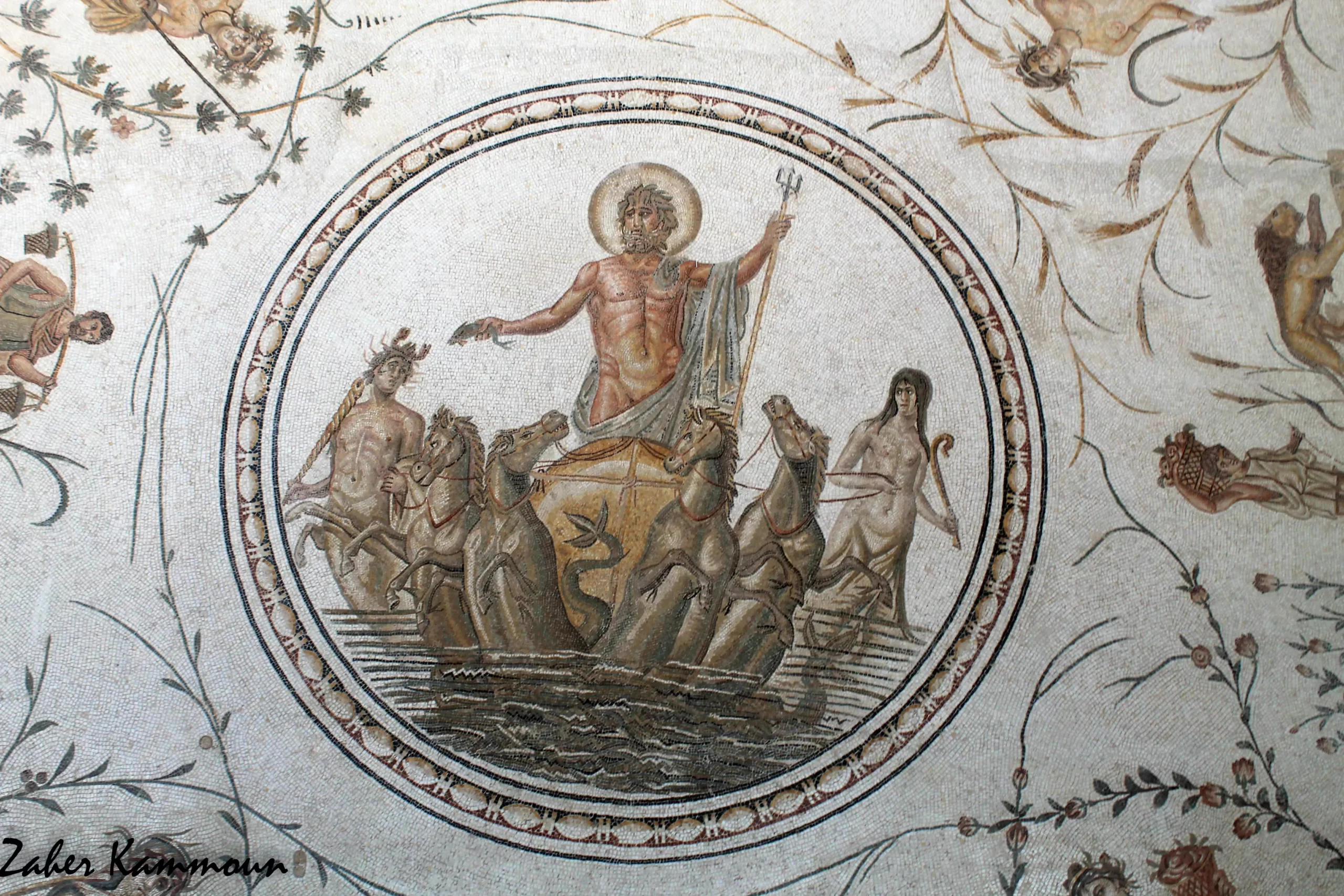History & Heritage
8.21.2023
One of the world’s largest collection of Roman mosaics is in Tunisia

Over the past three millennia, Tunisia has been the melting pot of many civilizations, and the Bardo National Museum is the embodiment of this.
Located in a former beylical palace near the old town of Carthage, the museum has the distinction of being Tunisia’s oldest and most important repository of historical artifacts. In its opulent halls, visitors discover relics spanning every era of Tunisian history, from an ancient altar predating recorded history to sculptures from the Hellenistic era and intricate Carthaginian jewelry.
While the Bardo Museum as a whole is well worth a visit, one of its main attractions is the abundance of ancient mosaics that adorn its walls and floors. Originating from Roman and Byzantine sites in Tunisia, these well-maintained mosaics occupy over 50% of the museum’s exhibition space and constitute the second largest collection of Roman mosaics in the world.
The Bardo Museum represents “the premier destination for exploring and understanding Tunisia’s vast and rich history,” explains curator Aziza Mraihi in the columns of Smithsonian Magazine. The mosaics offer a particular insight into life in Roman Africa, from depictions of mythological events to renowned figures of the empire.
Voir cette publication sur Instagram
The emergence of a prosperous province
The Roman province of Africa was marked by remarkable wealth. After a century of Punic wars, the Romans laid siege to Carthage from 149 BC, resulting in the annihilation of the city. Nevertheless, in 44 BC, Julius Caesar re-established Carthage as a municipality within the new empire. This rejuvenation marked the beginning of a flourishing era, with the fertile regions of northern Tunisia becoming essential contributors to the empire’s cereal production. Roman Africa consolidated its importance and prospered well into the 5th century, giving rise to Romanized cities across the country.
Especially for my Classicist friends. The depiction of Virgil with two muses from Hadrumetum, Tunisia #TunisiaOdyssey pic.twitter.com/Jwlsmq7tf4
— Dr Sophie Hay (@pompei79) November 13, 2014
A unique collection
The jewel in the crown of the mosaic collection is the only known mosaic depicting the Roman poet Virgil. Dating from the 3rd century, this piece was discovered in a villa in Sousse and depicts the poet composing his famous epic, the Aeneid. Another masterpiece from Sousse in the east of the country is the Triumph of Neptune, depicting the god of the sea surrounded by the four seasons. Covering an area of over 100 square metres, it is one of the best-preserved mosaics in the ancient world, and decorates the museum’s entrance hall.
The wealth of Roman Africa was based on agriculture, and the Four Seasons were an ideal motif to represent the various stages of agrarian activity. In this context, Neptune symbolized fertility, representing not only the god of the sea, but also of fresh water and rain. The mosaic associates the theme of the four seasons with Dionysus, a divinity frequently present in Roman art. The god’s presence on numerous sarcophagi can be explained by his double birth. In public baths, he was venerated as the divinity of wine and pleasure. Military triumphs depicted on mosaics revolved mainly around Dionysus, rather than Roman emperors. This mosaic features a complex iconography, including grotesque figures and bands of small, fantastical images reminiscent of candelabra, typical motifs of Roman wall paintings.
Mosaic of Neptune riding a chariot pulled by two seahorses – Hadrumetum (modern Sousse, Tunisia), 3rd century AD. pic.twitter.com/2tIr014lT6
— Archaeology & Art (@archaeologyart) July 24, 2022
As the Roman Empire expanded its African colonies in the early Common Era, countless mosaic pavements adorned the town houses and rural estates belonging to the African elite. Between the second and sixth centuries, mosaic art developed considerably, particularly in Africa Proconsularis, the region that encompasses modern Tunisia. Unlike the official art of imperial Rome, these mosaics gave a glimpse into the daily lives of citizens.
popular

